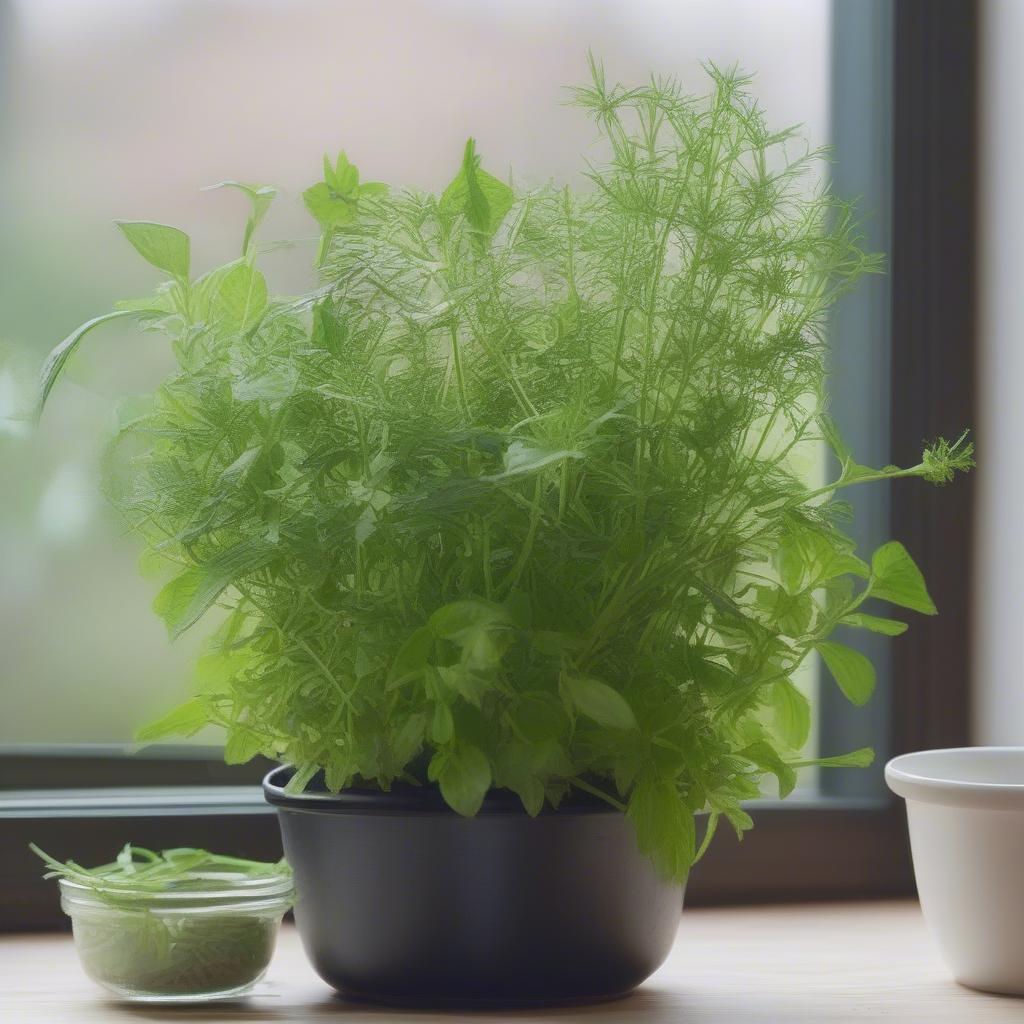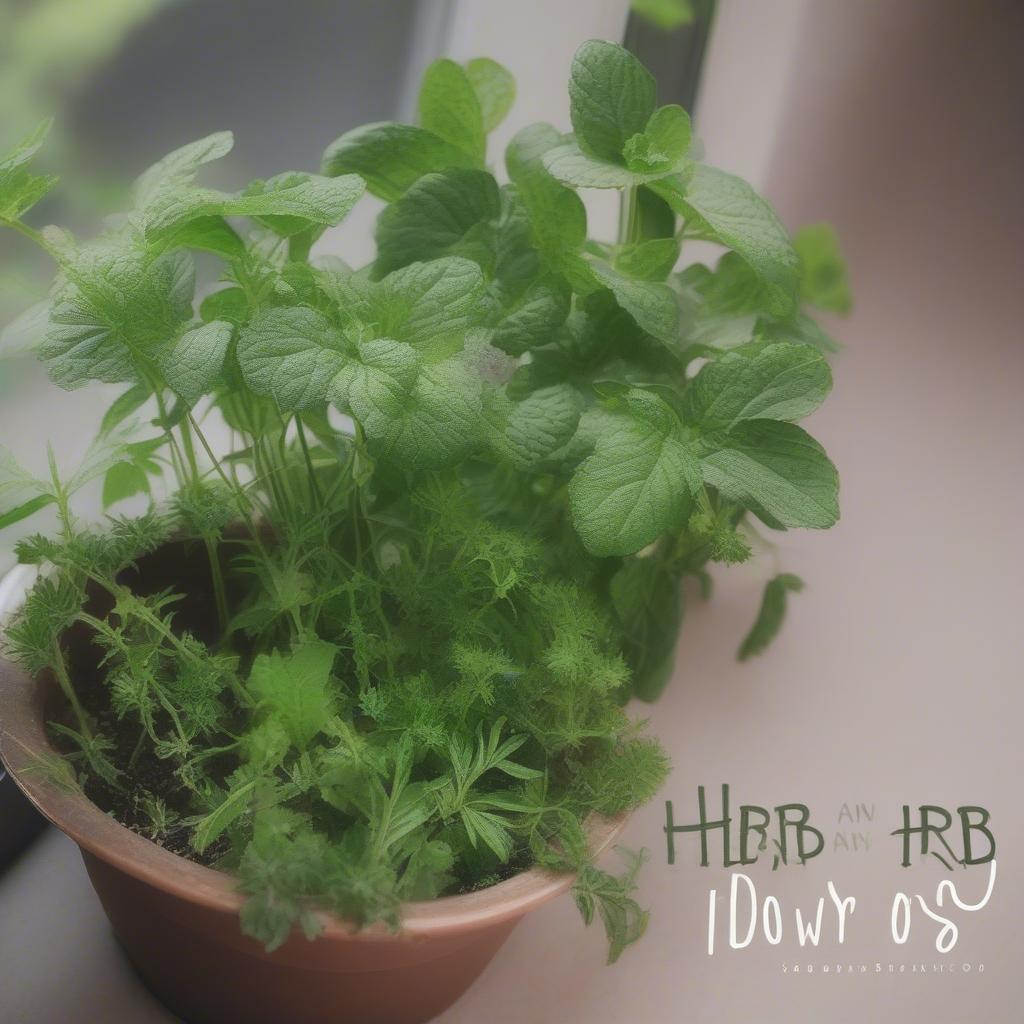
Starting an Indoor Herb Garden: A Beginner’s Guide to Growing Fresh Herbs Year-Round
Why Start an Indoor Herb Garden?
Are you looking for a way to grow something green during the long, dark winters? Do you want to grow your own food and feel the joy of harvesting something fresh for dinner, even if you don’t have any outdoor space? Starting an indoor herb garden is the perfect solution. Not only are herbs low-maintenance and easy to grow, but they’re also a great way to add some greenery to your home and enjoy the benefits of fresh, homegrown flavors.
Getting Started with Your Indoor Herb Garden
Choosing the Right Container
When it comes to choosing a container for your indoor herb garden, make sure it has drainage holes to prevent waterlogged soil. If your container doesn’t have drainage holes, you can add a small piece of landscape cloth, weed barrier cloth, or a coffee filter to the bottom of the container to keep the soil from washing away.
Preparing the Soil
Fill your container with a well-draining, organic soil. You can also add 2-3 inches of compost to the top of your container to give your herbs a great start. I recommend using organic mushroom compost from Espoma.
Selecting the Right Herbs
Choose your favorite herbs from the list of the best indoor herbs below. If your container is larger than 6 inches in diameter, you can grow several different herbs in the same space. Just keep in mind that mint and lemon balm can be quite invasive, so it’s best to keep them separate from other herbs.
Best Indoor Herbs to Grow
- Basil
- Mint
- Chives
- Lemon Balm
- Thyme
- Oregano
- Garlic
- Onions
Starting Your Herbs from Seed or Seedlings
You can start your herbs from seed or seedlings. I recommend buying organic, seedlings from a local nursery or starting your own herbs from seed. Basil, in particular, does well when started from seed.
Caring for Your Indoor Herb Garden
Lighting
Most herbs need at least 4-6 hours of sunlight to grow well indoors. However, some herbs like rosemary, sage, thyme, and oregano prefer more light and can tolerate direct sunlight. Others like mint, chives, and lemon balm prefer partial shade.
Artificial Lighting
During the short days of winter, it might not be possible to give your herbs the natural light they need. An artificial source of light can help you maintain healthy herbs indoors when sunlight is lacking. Look for full-spectrum lights with a timer or remote to simplify your life.
Watering
Make sure to water your herbs regularly, but avoid overwatering. Most herbs prefer moist soil, but not waterlogged soil.
Harvesting Your Herbs
Regular Pruning
Regular pruning is essential to encourage more leaf production and to have delicious leaves to eat. When harvesting, use a clean pair of pruners or scissors to cut from the outermost branches of a mature plant.
The Golden Rule of Harvesting
The golden rule of harvesting is to never cut more than a third of a plant at a time. Give your herb time to bounce back so that you can return for more harvests in the future.
Benefits of Starting an Indoor Herb Garden
Starting an indoor herb garden is a great way to enjoy fresh, homegrown flavors year-round. Not only will you save money on store-bought herbs, but you’ll also have the satisfaction of growing your own food.
Tips for Keeping Your Herbs Happy and Healthy
Keep Your Herbs Away from Drafts
Make sure to keep your herbs away from drafts and extreme temperatures.
Keep Your Herbs Clean
Regularly clean your herb plants to prevent pests and diseases.
Don’t Overwater
Avoid overwatering your herbs, as this can lead to root rot and other problems.
Conclusion
Starting an indoor herb garden is a fun and rewarding experience. With the right container, soil, and care, you can enjoy fresh, homegrown flavors year-round. Remember to always prune your herbs regularly, use artificial light when necessary, and keep your herbs happy and healthy. Happy gardening! Why should I start an indoor herb garden?
Why should I start an indoor herb garden?
To grow fresh, homegrown herbs year-round, especially during winter, and to save money on store-bought herbs.
What kind of container should I use for my indoor herbs?
A container with drainage holes; if not, add a piece of cloth or filter at the bottom.
What type of soil is best for indoor herbs?
Well-draining, organic soil, with 2-3 inches of compost on top.
Which herbs are best suited for indoor gardening?
Basil, Mint, Chives, Lemon Balm, Thyme, Oregano, Garlic, Onions.
How should I start my indoor herbs?
From seed or seedlings, preferably organic seedlings from a local nursery.
What lighting do indoor herbs need?
At least 4-6 hours of sunlight; some herbs prefer more light and can handle direct sunlight.
Do I need artificial light for my indoor herbs?
Yes, especially in winter, use full-spectrum lights with a timer to supplement natural light.
When and how often should I water my indoor herbs?
Water regularly, ensuring soil is moist but not waterlogged.
How often should I prune my indoor herbs?
Regularly prune to encourage growth and ensure you have plenty of fresh herbs to harvest.
Can I cut more than a third of my herb plant at one time?
No, never cut more than a third to allow the plant to recover.
What are the benefits of having an indoor herb garden?
Enjoy fresh, homegrown flavors year-round and save money on store-bought herbs.
How can I keep my herbs away from drafts?
Place herbs away from drafts and extreme temperatures.
How do I keep my herbs clean?
Regularly clean your herb plants to prevent pests and diseases.
Why should I avoid overwatering my herbs?
To prevent root rot and other problems due to overwatering.













